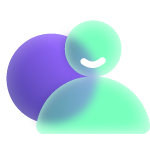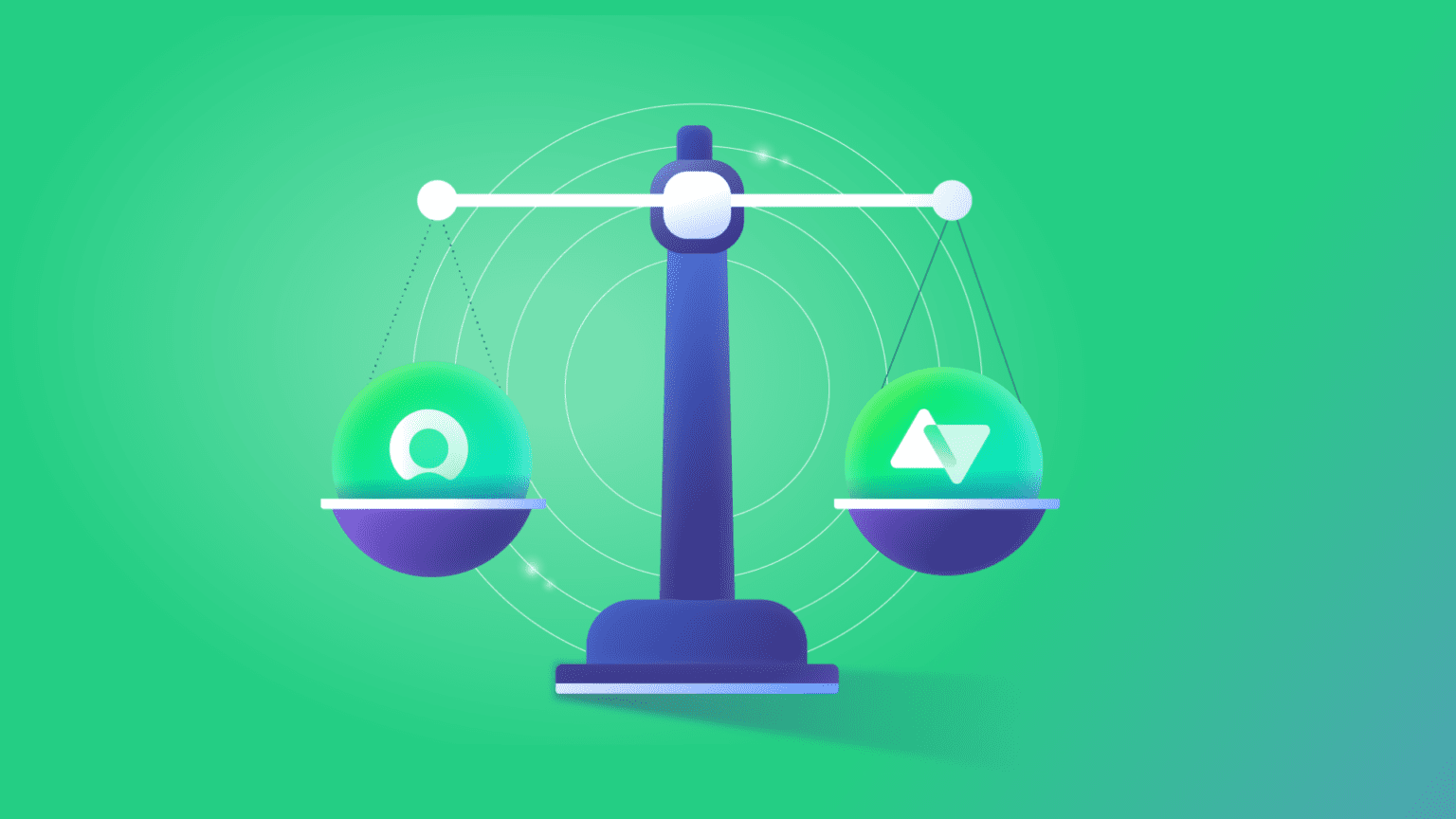Companies looking to unify ServiceNow data with other applications or ServiceNow instances need to find an integration solution or build one from scratch.
Regardless of your choice, the ServiceNow data integration must be able to process requests and fetch accurate data without exposing the system infrastructure to security vulnerabilities.
If you want to learn how ServiceNow data integration works and the benefits of integrating ServiceNow with other platforms, I’ll help you go through everything you need to know.
A Quick Overview of ServiceNow Data Integration
ServiceNow data integration is the process of consolidating data from multiple sources to your ServiceNow instance to gain a centralized view of project-relevant insights, which can be used to make decisions.
Enterprises and organizations in different industries rely on ServiceNow to manage IT services (ITSM), business processes (ITBM), operations (ITOM), and customer service (CSM).
This broad application makes ServiceNow a fountain of internal service-oriented and customer-specific data.
ServiceNow has a service-oriented architecture (SOA), which allows it to connect with other systems bidirectionally via direct and mapped web services or technologies such as SOAP, REST, etc.
It also supports data sources such as HTTP(s) and FTPs and formats such as CSV, XLS, and XML.
To ensure the user or system requesting information is authorized, ServiceNow provides a JWT-based OAuth 2.0 authentication protocol and stores the data in remote tables, forms, and lists.
Key Components and Features of ServiceNow Data Integration
Here are some must-have features for ServiceNow data integration tools.
- Pre-built connections: A library of default connections or data flow templates for handling simple synchronization use cases. For example, a connection between ticket descriptions.
- Connection dashboard: A centralized dashboard for viewing all connections and monitoring their performance and statuses.
- Security features: This usually involves authentication and authorization protocols (Basic Auth and OAuth). Other options include API keys, tokens, and HTTPs. Firewalls can also boost integration security between ServiceNow and third-party applications.
- Data mapping console: This console could be a visual configurator or a scripting engine for establishing the sync rules between two platforms.
- Reporting and analytics: The dashboard could also support detailed reporting by providing performance metrics for every connection.
- Event triggers: These are automated scripts or controls that determine what happens when an event occurs—say the user creates a new ticket. Triggers give both sides granular control over their respective ends of the connection.
- Self-service portal: Some solutions contain AI-enabled assistants for admins looking for scripting help to avoid writing rules from scratch.
- Notifications and automation: These components keep admins updated about events or user actions. Setting up notifications helps you know when a ticket is raised, or a connection fails.
Other features and components of ServiceNow API integration include support portals, error handling mechanisms, configuration spokes, etc.

The Best ServiceNow Data Integration Solutions
Let’s go through some of the best ServiceNow data integration tools. We considered factors like reliability, platform compatibility, customizability, and performance.
Integration Hub
ServiceNow Integration Hub is the native ServiceNow solution that enables users to build integrations to connect with third-party systems and services.
Integration Hub allows users to build spokes—event-driven configurations—using the Spoke Generator. You can also use it to define event inbound and outbound trigger endpoints after the webhook has been authenticated.
The Workflow Studio also allows users to sync data across multiple instances and build custom integrations using a REST or Script step. You can also connect your Apache Kafka.
As part of security, ServiceNow Integration Hub stores information and credentials when connecting with external systems using aliases. This reduces the work of manually setting up aliases for specific systems.
Third-party Integration (Exalate)
Integration Hub works well for ServiceNow-to-ServiceNow integrations because both platforms are compatible. However, for non-compatible applications, admins still need to establish the integration logic and framework.
That’s where third-party integration solutions like Exalate come in.
Exalate supports bidirectional integration between ServiceNow instances, as well as ServiceNow with other ITSM, CRM, or CMS solutions.
What differentiates Exalate from Integration Hub is that you can install the app on both sides of the connection, which makes it completely decentralized. Unlike Integration Hub, Exalate also supports deep integration.
Custom Code
Organizations opt for custom code when they want to keep integration development in-house—or if they can’t find a fitting solution for their specific use case.
To get custom code to work, hire or assemble a team of developers with in-depth knowledge of the platform. Connection options include SOAP and REST web services, which can send and receive data via HTTP POST requests.
You can also set up event triggers by configuring webhooks to notify you about system changes, record updates, and workflow completions. The data loader fetches and transforms massive data sets in the appropriate format.
The drawback to ServiceNow data integration using custom code is that you need to worry about compliance and industry regulatory requirements. You also have to account for security and privacy.
iPaaS Solutions
iPaaS solutions act as middleware that bridges the compatibility gap between different systems in order to get them to exchange data and unify workflows.
These solutions combine no-code configuration with code-based algorithms and triggers to control how the configuration works.
Modern iPaaS solutions for ServiceNow data integration are hosted on a cloud, hybrid, or on-premises architecture.
ServiceNow iPaaS integration solutions include Boomi, Perspectium, Mulesoft, Make, and Jitterbit Harmony.

Benefits of ServiceNow Data Integration
Organizations can benefit from ServiceNow data integration in several ways. Let’s go through them.
Access to better data quality
Integrating ServiceNow with other applications enables the automatic transfer of data between them. This eliminates the need for manual data entry and ensures strict adherence to mapping rules and synchronization workflows.
As a result, the data obtained from such integration scenarios has a higher level of accuracy and overall quality.
Informed decision-making
With access to better-quality data, managers, stakeholders, and executives can make decisions based on actual insights.
Say you implement Zendesk ServiceNow data integration; stakeholders will be able to determine how your customer support efforts translate into user satisfaction.
Broader access to analytical tools
One benefit of ServiceNow data integration with other systems is to gain access to other analytical tools.
For instance, organizations that integrate ServiceNow and Salesforce will be able to generate insights from tools like Tableau Cloud and Einstein Predictions.
Better business relationships
External teams working with different systems can establish transparent, symbiotic relationships with partners and clients. For instance, Nviso, a cybersecurity MSP, uses Exalate to connect Jira and ServiceNow to maintain deep ticket integration with clients.
Similarly, the shipping company MAERSK used the Exalate ServiceNow integration app to streamline processes between their call center and support teams.
Improve customer experience
Integrating CRMs and help desk applications makes it possible for support teams to address customer complaints promptly with a clear view of their interactions.
ServiceNow CRM integration ensures access to multiple data sources, which provides a broader data set to help decrease resolution times and improve overall service delivery.

Challenges of ServiceNow Data Integration
Setting up a ServiceNow API integration could get stressful because of the following reasons:
The absence of real-time data availability
Simple changes can happen in real time. However, for projects and organizations with massive data sets, finding a solution that can perform real-time ServiceNow data integration can be difficult.
Most times, you’d need to process the transactions in batches to avoid clogging up the sync queues and overloading the integration solution.
Performance issues
Most iPaaS and third-party integrations are built to scale and maintain consistent performance levels—however, the larger the data volume, the less predictable the system.
Network timeouts, sync failures, data loss, and data inconsistency are also challenges that can reduce the efficacy of ServiceNow data integration.
The alternative is to schedule massive data transactions outside of business hours, which doesn’t bode well for time-sensitive exchanges.
Complicated error handling
You can map the wrong objects or entities, or an error in your script can prevent the operation from running.
Without a proper error-handling mechanism, system admins can only rely on experience and trial and error to figure out what’s gone wrong with the sync. This can be frustrating.
Lack of technical expertise
When the person or team in charge of configuration doesn’t know the programming language for the system, they won’t be able to get the integration to work.
For instance, ServiceNow uses JavaScript, while Salesforce relies on the Java-based Apex. If your devs don’t know the syntax of one of these programming languages, they’ll be unable to build the integration.
Information security
Since the integration would handle sensitive business data, you must pay extra attention to security and privacy. This also involves ensuring that only authorized users have access to the system configuration.
When connecting with other organizations, it is impossible to account for their data management practices. This puts the data you share with them at risk of exposure.
ServiceNow Data Integration Use Cases
Here are common business and technical use cases for ServiceNow data integration:
- ServiceNow to ServiceNow: This involves connecting multiple ServiceNow instances to share information. Supported integrations include CMDB, change requests, problems, RITM, and different field types between two ServiceNow instances.
- ServiceNow to service (help) desks: This involves connecting ServiceNow with a service desk or help desk such as Jira Service Management. One implementation is the use of Jira ServiceNow data integration to share sync urgency and priority between Jira and ServiceNow.
- ServiceNow to third-party CRM or ITSM solutions: Admins can sync CRM solutions by exploring Salesforce ServiceNow integration to share incident entities with Salesforce objects.
- ServiceNow to database or version control systems: ServiceNow can also connect with version control systems such as GitHub. This GitHub ServiceNow integration provides a link between the ongoing resolution and the customer request.
- ServiceNow to communication tools: You can sync ServiceNow with communication tools like Slack and email messengers to get instant updates.
How to Use Exalate for ServiceNow Data Integration
Follow these steps in this ServiceNow data integration tutorial to set up Exalate for integrations between ServiceNow and other platforms.
Step 1: Install Exalate on ServiceNow and the Other Application
The first step is to install Exalate on ServiceNow and then on the other platforms (Jira, Azure DevOps, ServiceNow, GitHub, Zendesk, Salesforce, etc).
To start installing Exalate visit its integrations page, choose your system, and proceed from there.
Note: Exalate for ServiceNow can also be installed on docker.
Step 2: Connect ServiceNow and the Other Application
One side initiates the connection and generates an invitation code. The other side accepts the connection invitation using this invitation code. It doesn’t matter which side initiates the connection, the Exalate UI remains the same.
Assume we start initiating the connection from ServiceNow.
Navigate to the “Connections” screen in the Exalate console on the left-hand side menu bar.
Click on the “Initiate Connection” button.
Enter the “Destination Instance URL”.

You will need to choose between the Basic and the Script mode.
The Basic mode supports pre-defined field mappings between the different systems that cannot be configured. The Script mode uses a Groovy-based scripting engine to configure fields and define how to map them.
The Basic Mode
Select “Basic” in the option above and click “Next”.
You will need to verify if you have admin access to the destination instance or not.
Once that is done, depending on the destination instance, you would either need to select a project in Jira and Azure DevOps or a repository in GitHub. If no such concept exists, then the connection is successfully established.
You can enter the incident number.
And see the result of your synchronization immediately.
You can also choose to filter incidents that can be synced using the Basic mode automatically with the help of triggers, or you can even sync entities in bulk.
The Script Mode
Choose “Script” and click “Next”.
Enter the connection details. Give a short name to the local instance and a short name to the remote instance. A connection name is automatically generated. You can change it if you want to.
Click “Next”.
An invitation code is generated. This needs to be copied and pasted into the destination instance.
So click on “Copy invitation code” and save it somewhere safe. Then click “Done”.
On the destination instance, go to the Exalate console and select the “Connections” tab.
This time around, click the “Accept invitation” button.
Paste the code you have just copied. Again, depending on the destination instance, you will either be required to choose a project or a repository, or the connection will be successfully established.
Step 3: Configure the Connection to Decide What to Share
On the previous screen, if you click “Configure Sync” you will be shown a panel that looks like this:
“Rules” and the “Triggers” tabs are the ones we need here.
Rules are Groovy scripts that let you control the information flow.
In the “Outgoing sync” on the ServiceNow side, the line replica.description=entity.description, means that the description of the ServiceNow entity is copied into something called a replica — an empty container that carries the payload.
In the “Incoming sync” on the remote side, you’ll also see similar mappings, which you can edit for your specific use case.
Check out the Getting Started guide on the Exalate documentation to see how these initial steps work out with Exalate, or refer to the Script Helpers for advanced scripting logic.
Step 4: Start Automatic Synchronization Using Triggers
Triggers are platform-specific and need to be set on both sides of the integration if you want a two-way sync.
To create one, click the “Create Trigger” button.
Choose the entity you want to set the trigger for.
On the ServiceNow side, you can choose between incidents, RITMs, problems, change requests, etc. In the “If” section, use the ServiceNow search syntax. Entities that meet the conditions are automatically synced.
You can write advanced triggers for events, such as syncing incidents assigned to a particular person or syncing incidents that have a particular text in a comment or description.
Once done, leave some notes and activate the trigger. You can see the trigger you just created in the list.
Exalate allows you to sync all the existing entities that satisfy the trigger conditions using the “Bulk Exalate” option.
After making the changes, hit the “Publish” button to apply them.
Step 5: Start the Synchronization
The sync will start automatically based on the triggers you have set up. If, for some reason, it doesn’t start instantly, grab some coffee, and by the time you are back, it will be working just fine.
If there are some issues with the triggers or rules, you can also troubleshoot and find out what’s going wrong.
Key Takeaways
In our exploration of ServiceNow integration capabilities, we found out that:
- Organizations rely on ServiceNow integrations to ensure quality data management, transformation, and security.
- A ServiceNow integration solution could be a native application on the Now platform, a custom API code-based integration, a third-party application, or an iPaaS solution.
- Some of the challenges encountered while implementing ServiceNow service desk integration include a lack of technical expertise, performance issues, and technical debt.
- Choosing the right ServiceNow connectors will help your business scale, improve the customer experience, reduce workloads, and increase workflow efficiency.
Want to find out how Exalate handles ServiceNow data integration? Book a demo with our solution engineers.
Recommended Reads
- Jira ServiceNow Integration: How to Connect Jira and ServiceNow in 5 Steps
- ServiceNow Connectors: How To Connect Systems and Companies
- How to Integration Guides for Two-way Syncs between Multiple Systems
- Advanced Integration Use Cases
- Practical Jira ServiceNow Integration Use Cases for Your Business
- How to Set up a Salesforce ServiceNow Integration: The Complete Step-by-Step Guide
- ServiceNow to ServiceNow Integration: How to Set up a Two-Way Sync
- How to Set Up a ServiceNow Azure DevOps Integration: The Step-by-Step Guide



